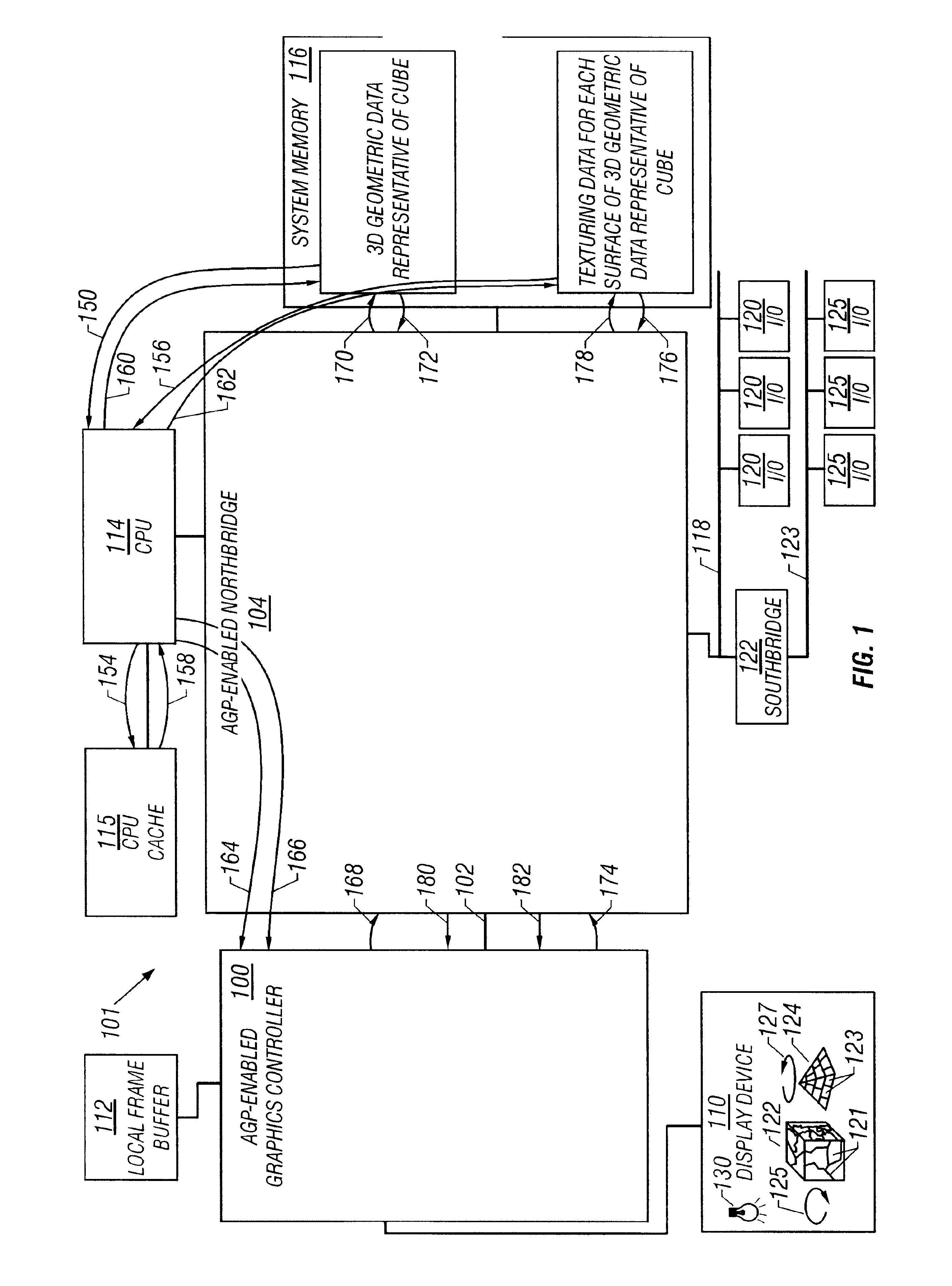Method and system for data transmission in accelerated graphics port systems
a graphics port and data transmission technology, applied in the field of data transmission methods and systems in accelerated graphics port systems, can solve the problems of affecting the original high performance of the pci bus, the 3d illusion created by the use of mutually perpendicular lines is generally perceived as inferior to that produced by coloring and shading techniques, and the technique is not easy for a computer to translate through geometric space for continuous creation
- Summary
- Abstract
- Description
- Claims
- Application Information
AI Technical Summary
Problems solved by technology
Method used
Image
Examples
Embodiment Construction
Several various embodiments have been described above, and it will be obvious to those skilled in the art that, based upon the teachings herein, changes and modifications may be made without departing from this invention and its broader aspects. That is, all examples set forth herein are intended to be exemplary and non-limiting.
For example, while the components discussed above have been described dependent upon the PIPE# signal, it will be appreciated that the selection of this signal is a design choice and that the functions described related to the PIPE# may be embodied via a number of different signals. Accordingly, the presence and location of any described functions are not intended to be limiting.
Also for example, while the graphics controller command queue mimicking buffer has been described as being implemented in a FIFO, it will be appreciated that other types of buffers can be used to implement the device. Accordingly, the described architectures are not intended to be li...
PUM
 Login to View More
Login to View More Abstract
Description
Claims
Application Information
 Login to View More
Login to View More - R&D
- Intellectual Property
- Life Sciences
- Materials
- Tech Scout
- Unparalleled Data Quality
- Higher Quality Content
- 60% Fewer Hallucinations
Browse by: Latest US Patents, China's latest patents, Technical Efficacy Thesaurus, Application Domain, Technology Topic, Popular Technical Reports.
© 2025 PatSnap. All rights reserved.Legal|Privacy policy|Modern Slavery Act Transparency Statement|Sitemap|About US| Contact US: help@patsnap.com



